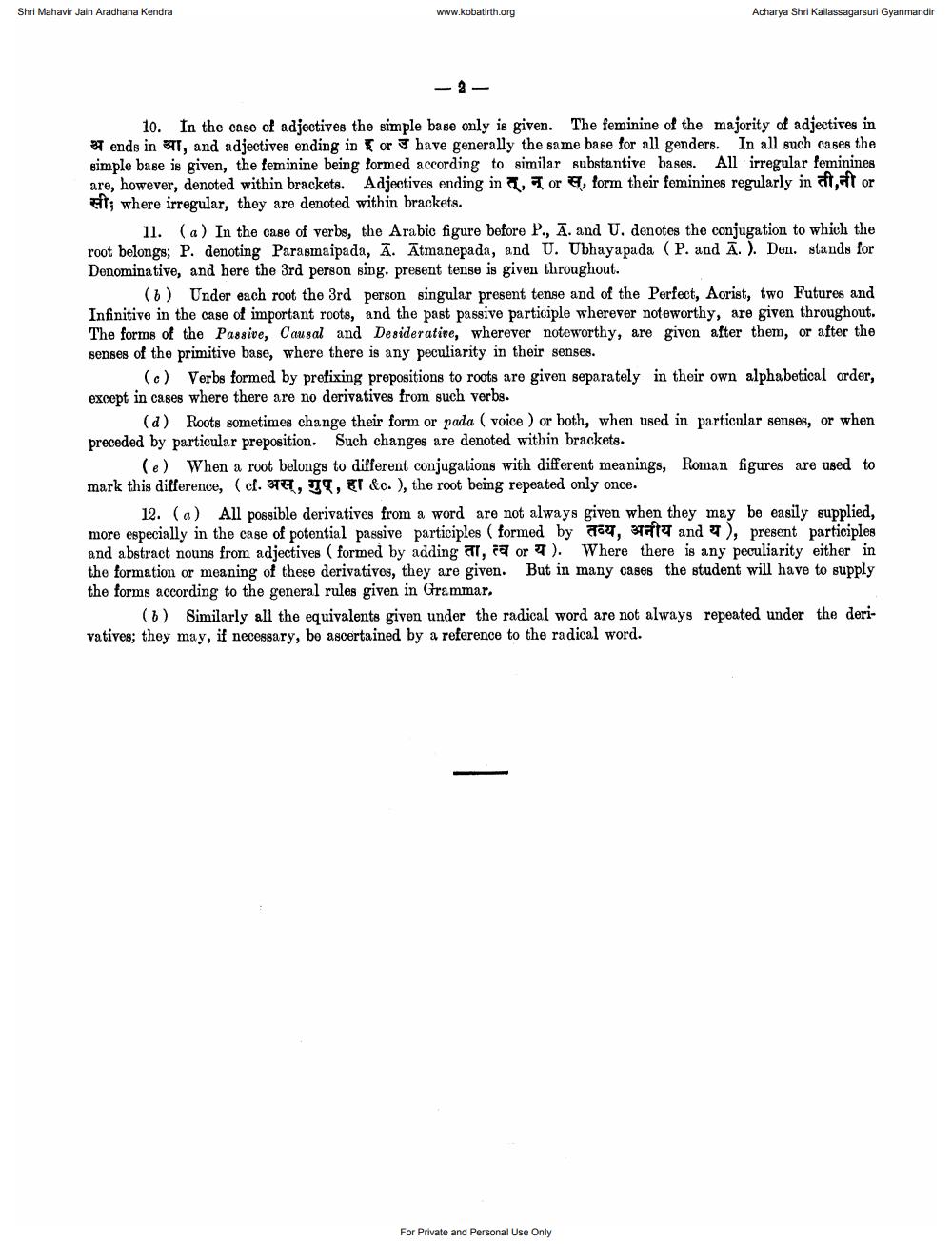________________
Shri Mahavir Jain Aradhana Kendra
www.kobatirth.org
Acharya Shri Kailassagarsuri Gyanmandir
10. In the case of adjectives the simple base only is given. The feminine of the majority of adjectives in T ends in 871, and adjectives ending in or have generally the same base for all genders. In all such cases the simple base is given, the feminine being formed according to similar substantive bases. All irregular feminines are, however, denoted within brackets. Adjectives ending in 1, or form their feminines regularly in aft,aft or et; where irregular, they are denoted within brackets.
11. (a) In the case of verbs, the Arabic figure before P., A. and U. denotes the conjugation to which the root belongs; P. denoting Parasmaipada, A. Atmanepada, and U. Ubhayapada (P. and A.). Den stands for Denominative, and here the 3rd person sing. present tense is given throughout.
(6) Under each root the 3rd person singular present tense and of the Perfect, Aorist, two Futures and Infinitive in the case of important roots, and the past passive participle wherever noteworthy, are given throughout. The forms of the Passive, Causal and Desiderative, wherever noteworthy, are given after them, or after the senses of the primitive base, where there is any peculiarity in their senses.
(c) Verbs formed by prefixing prepositions to roots are given separately in their own alphabetical order, except in cases where there are no derivatives from such verbs.
(d) Roots sometimes change their form or pada (voice) or both, when used in particular senses, or when preceded by particular preposition. Such changes are denoted within brackets.
(e) When a root belongs to different conjugations with different meanings, Roman figures are used to mark this difference, (cf. STE, IT, ET &c.), the root being repeated only once.
12. (a) All possible derivatives from a word are not always given when they may be easily supplied, more especially in the case of potential passive participles ( formed by 27, apare and ), present participles and abstract nouns from adjectives (formed by adding at, ca or T). Where there is any peculiarity either in the formation or meaning of these derivatives, they are given. But in many cases the student will have to supply the forms according to the general rules given in Grammar.
(6) Similarly all the equivalents given under the radical word are not always repeated under the derivatives; they may, if necessary, bo ascertained by a reference to the radical word.
For Private and Personal Use Only




